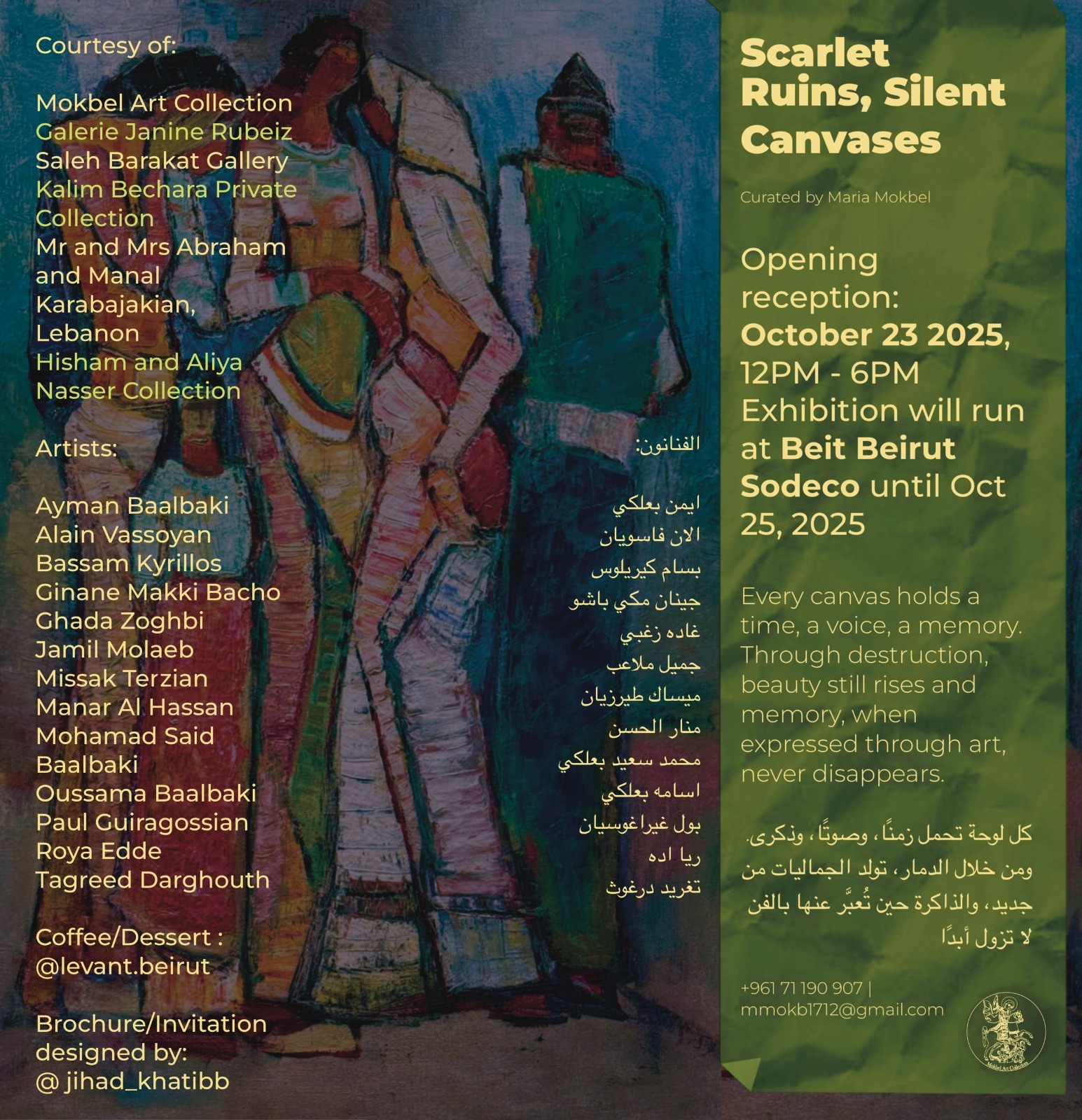Scarlet Ruins, Silent Canvases
Scarlet Ruins, Silent Canvases
Curated by Maria Mokbel
A Personal Archive of Memory
Raised in the heart of the Lebanese art world through my family’s collection, I grew up seeing art as more than just visual expression — it was a living archive. For me, art holds memory, emotion, and identity across generations. As a recent graduate of Parsons Paris–The New School, I created Scarlet Ruins, Silent Canvases to reflect what I’ve learned: that art doesn’t simply mirror conflict — it absorbs it, transforms it, and often carries its wounds.
Exploring Conflict Through Art
This exhibition examines how conflict across the Middle East has shaped artistic expression. The title speaks to the themes at its core: Scarlet suggests blood and urgency; Ruins reflect destruction and survival; Silent Canvases represent quiet yet powerful testimonies where words fall short.
Together, these works show how instability shapes both memory and artistic practice. They offer not literal depictions of war, but deeply emotional impressions of its impact.
Selected Works and Artists
The selection process centered on emotional truth and historical resonance. These works were not chosen to illustrate violence directly, but to explore its echoes — in memory, identity, and lived experience.
-
Ayman Baalbaki’s veiled figures and fractured cityscapes express both resistance and mourning, rendered with expressive, urgent brushwork.
-
Tagreed Darghouth’s haunting skulls do not shout; they whisper, leaving viewers with a quiet, lasting weight.
-
Paul Guiragossian uses elongated, abstracted forms to reflect themes of exile and displacement — shaped by his Armenian-Lebanese identity.
-
Mohamad-Said Baalbaki’s City Limits, physically damaged in the 2020 Beirut blast, is both an artwork and an artifact of destruction.
Each piece transforms personal and collective pain into enduring visual language.
Reclaiming Space in the Global Narrative
Historically, Middle Eastern art has been marginalized — often viewed through a decorative or orientalist lens in Western institutions. Therefore, this exhibition is part of a broader effort to shift that narrative. It places Middle Eastern artists at the center of global conversations about history, conflict, and identity.
By blending traditional aesthetics with contemporary realities, the exhibition resists simplification and instead embraces nuance and layered storytelling.
A Space for Memory, Reflection, and Hope
This exhibition is for those who have lived through war — and for those who inherited its silence. It invites older generations to revisit their memories, not only through trauma but with dignity. Simultaneously, it offers younger audiences an emotional understanding of history — not through facts alone, but through brushstrokes, texture, and form.
Moreover, for international viewers, it offers a deeper, more human view of the Middle East — one rooted in complexity, beauty, and resilience.
A Personal and Collective Act of Remembrance
Curating Scarlet Ruins, Silent Canvases is not just a professional milestone — it is a deeply personal journey. I believe art preserves, connects, and heals. This exhibition is not only about war; it’s about what endures: stories, culture, and a creative force that refuses to disappear.
It asks: How do we carry history forward? How do we look at pain and still find beauty?
Final Reflection
“Every canvas holds a time, a voice, a memory. Through destruction, beauty still rises — and memory, expressed through art, never disappears.”
— Maria Mokbel



